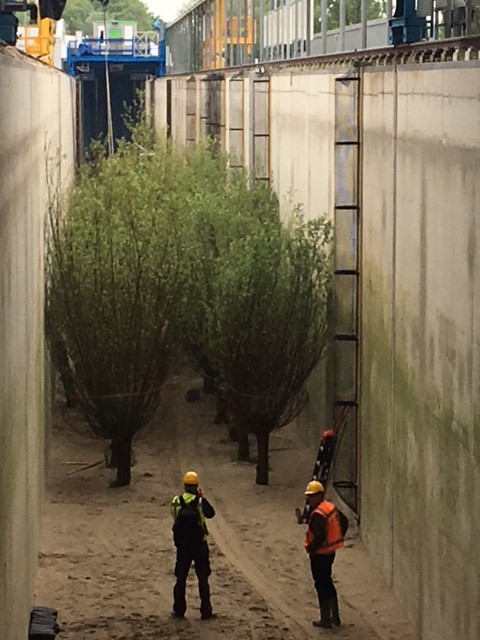Willows are an asset in natural flood defences
A lot of claims are made worldwide about the role nature can play in combating floods, typhoons and tsunamis. However, no sound research has ever been conducted into the effect of nature on extreme conditions of this kind. How well do trees break the waves? Can the trees themselves withstand the forces involved? Nobody really knows. New research will provide the answers.
In the Netherlands, nature and flood risk management sometimes conflict. Trees in the river area are sometimes removed where they could help to break waves. Learning more about how trees dampen waves could help to protect both nature and people better. Which is why researchers from research institutes Deltares, TU Delft and NIOZ have built a wood of willows in the largest wave flume in the world, the Delta Flume of Deltares. The experiment will start today when the researchers start to batter the trees with huge waves.
Natural flood risk management
Protection against water often involves the use of dams, dikes or other embankments. Can nature supply sound, and even cheaper, alternatives to protect people and their environment? Trees on riverbanks and coasts can be natural flood defences. But there has never been any scientific demonstration of the exact role trees can play in breaking waves. The full-scale experiment designed by researchers Bregje van Wesenbeeck (Deltares), Bas Hofland (TU Delft) and Tjeerd Bouma (NIOZ) is designed provide new insights.
Ecologist and coastal expert Bregje van Wesenbeeck: ‘You can’t always just go around building dikes. In this study, we will be looking at how we can use systems already present naturally to mitigate flood risks. Furthermore, there is a lot of demand around the world for new innovative solutions for flood risk management. Particularly against the backdrop of climate change and the growth of the global population.’
The trial
To better quantify the extent to which willows reduce wave heights, a total of 32 willows were positioned in the Delta Flume. The Delta Flume is 300 metres long, 5 metres wide, and 7.5-9 metres deep. Wave heights of up to 4 metres can be generated, making it possible to test the effect of waves on vegetation at full scale and to improve models for extreme wave conditions. Several types of test will be carried out: one test series with willows with leaves, one without leaves, a test series with thinned crowns and a test series without trees. In this way, the study can determine the role played by leaves, branches and trees. The trial will run for a total of twelve days, followed by the data analysis phase. The aim is to conduct a trial with real mangroves next year.
Crowdfunding
In addition to Deltares, TU Delft, NIOZ, Boskalis, Van Oord, Rijkswaterstaat, the World Wildlife Fund and VP Delta are closely involved in this study. There is still a shortfall of € 50,000 for this project. The general public is also being asked to contribute through a crowfunding campaign so that all the necessary analyses can be completed: www.woodsversuswaves.com.

